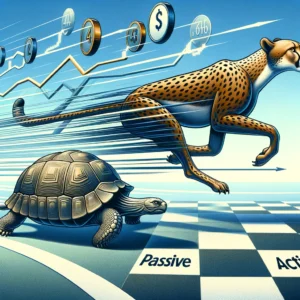The Wall Street Journal’s insightful article, “Your ‘Set It and Forget It’ 401(k) Made You Rich. No More.”, serves as a wake-up call for investors who have long relied on the conventional wisdom of passive 401k strategies. This strategy, once a beacon of hope for patient savers, is now under scrutiny due to changing economic landscapes.
Historical Overview of 401(k) Investments
Traditionally, the “set it and forget it” method has been a cornerstone of retirement planning. This approach typically involved a balanced mix of stocks and bonds, adjusted periodically. For decades, passive 401k strategies reaped rewards for those who weathered various economic storms, from market crashes to geopolitical turmoil.
The Turning Point: Challenges Facing Current Investors
However, the investment climate has radically changed, particularly since 2020. As the WSJ article notes, “longer-term Treasury yields have hit their highest levels in 16 years, causing their value to plummet, and stocks are expensive.” This situation calls for a reassessment of the once-reliable 60/40 stock-bond split.
Analysis of Current Market Conditions
The current economic scenario is marked by the highest inflation rates in the last 40 years, prompting aggressive rate hikes by the Federal Reserve. This shift has significant implications for passive investing performance, particularly for those relying on traditional 401(k) strategies.
The Shift in Investment Mindset
Investors now face a reality where past passive 401k strategies may no longer yield the same results. The article states, “Investors need to lower their expectations and play defense.” This advice is crucial in an era where conventional portfolios might not provide the same level of security or returns.
The Role of Bonds in a Balanced Portfolio
Bonds, traditionally the stabilizing force in a portfolio, are now a source of concern. With the current economic policies and rising interest rates, the bond market presents new risks that were previously unforeseen in a standard 60/40 allocation.

Rethinking Asset Allocation
In light of these challenges, it’s imperative for investors to rethink their asset allocation. Diversifying from passive 401k strategies into small-cap, emerging-market, and value stocks may offer more resilience and better passive investing performance than the traditional heavy reliance on large-cap stocks and long-term bonds.
Tailoring Your Investment Strategy
While adapting to market changes is crucial, it’s equally important to tailor your investment strategy to your personal financial goals and circumstances. Every investor’s journey is unique, and a one-size-fits-all approach might not always yield the best results. Understanding this, our Investment Management service offers personalized solutions that align with your specific needs and objectives.
The Future of 401(k) Investments
Looking ahead, investors should brace for potentially turbulent times. However, with careful planning and a willingness to adapt investment strategies, it’s possible to navigate these uncertain waters. As the WSJ article suggests, “The next decade might not be pretty, but with work, it can be less ugly.”
Conclusion: Adapting to a New Investment Era
In conclusion, the changing economic environment necessitates a fresh approach to 401(k) investing. The traditional passive investing performance that many have relied on may need a reevaluation in light of current market realities. Investors are encouraged to stay informed and flexible, revisiting their strategies to align with the evolving economic landscape. This proactive approach can help secure financial stability and growth in the face of new challenges.




